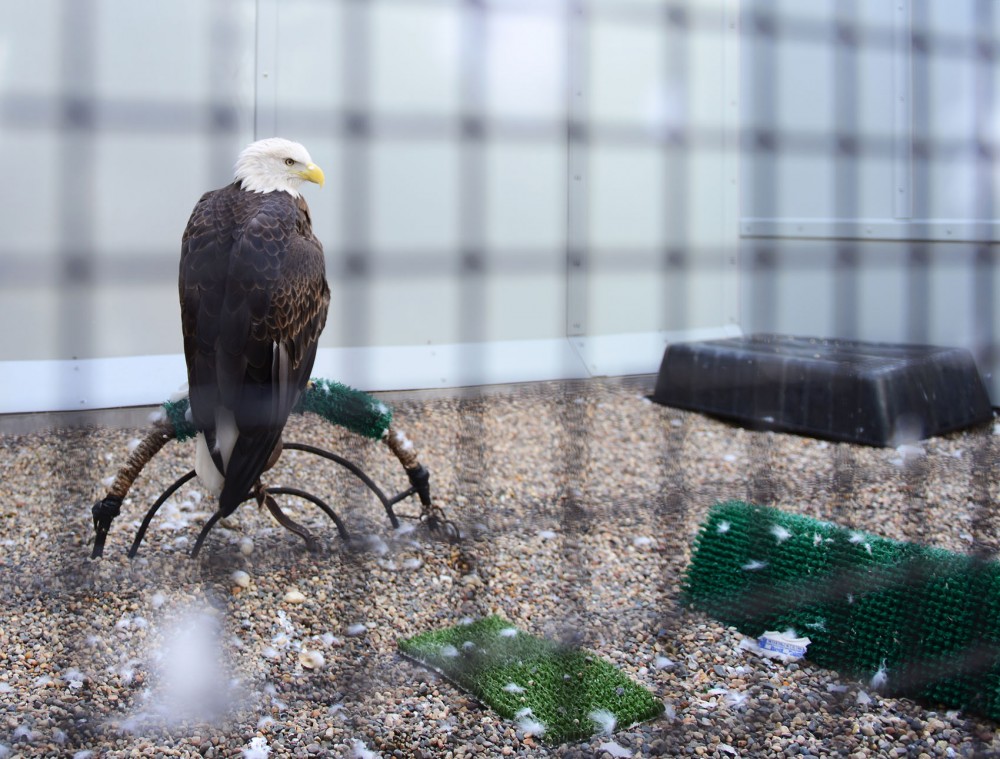As the whitetail deer hunting season winds down in Minnesota, more sick eagles than ever are turning up throughout the state.
While lead ammunition from hunters can be blamed on part of the increase, experts are unsure of the cause of the increase in injured and sick eagles.
For unknown reasons, Julia Ponder, executive director of the University of Minnesota’s Raptor Center, said the rate of injured eagles started to rise before the hunting season began.
There is normally an increase in injured eagles during deer hunting season and a month or two after, she said
“Hunting season is our busy season for injured eagles,” she said. “We see a lot of lead-poisoned eagles who had been scavenging on guts and other sources of lead from spent ammunition.”
So far this year, demand for the center’s services has been higher than ever, she said.
Lead from spent ammunition is the main source of lead poisoning, Ponder said.
Eagles often contract lead poisoning after eating carcasses and guts of deer shot and left behind by hunters. The ammunition used for the sport often contains lead, she said.
The predatory birds are also known to eat pheasants and waterfowl that have ingested lead.
Poisoned eagles often lose balance and ability to grasp objects, and they experience tremors and difficulty flying. Death can occur within two weeks of lead consumption.
To prevent this type of poisoning, Ponder said hunters should use copper or non-lead ammunition.
“The performance of copper ammunition is better, and it does not have the consequence of leaving toxic lead out in the environment. And it does not leave lead residue in the meat that people are eating,” she said.
But Minnesota Deer Hunters Association Executive Director Craig Engwall said hunters should have the freedom to choose whichever type of ammunition they like.
“It’s not our position that ammunition should be mandated, but hunters should be aware of non-lead options,” he said.
Irresponsible hunters are one of the causes of this problem, said Mark Houle, environmental sciences, policy and management sophomore and ESPM Student Association officer.
When hunters do not shoot the vitals of the deer, the deer may escape and lead may taint other parts of its body, he said.
“A guy I know shot a deer that went in private property,” Houle said. “He was unable to receive permission to retrieve it, so that deer may have died out there. That’s a carcass an eagle is eating that may have lead in it.”
If hunters shoot a deer in its vital areas, like the heart and lungs, the deer doesn’t suffer and the guts don’t get contaminated, he said.
“It’s better to not hit a deer at all than not shoot its vitals,” Houle said.
In the case of coming across an injured raptor — predatory birds with hooked beaks and keen eyesight — Ponder said people should call the Raptor Center.
“Once someone calls the Raptor Center, we talk them through the situation,” she said. “We evaluate if the bird is, in fact, a raptor, whether the behavior of the bird is normal and whether it appears to be injured or ill.”
She said people who came across an injured or sick raptor can be coached on how to contain the bird. Once contained, the center will arrange to bring the bird to the clinic for evaluation, she said.








